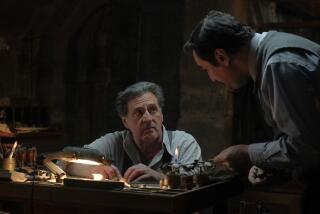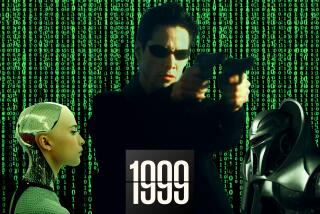A Second Look: ‘A Dangerous Method’
Few working filmmakers invite the application of the auteur theory — the notion that some films bear a directorial signature — as frequently as David Cronenberg. The coherence of his body of work is hard to miss. In movies as varied as “Videodrome,” “Dead Ringers” and “Crash,” he has found myriad ways to explore a recurring set of themes: the thrill and danger of transfiguration, the interrelation of the mind and the body.
With these obsessions so firmly established, it is no wonder that many critics and fans watch a new Cronenberg film looking for signs of the old ones, sometimes detecting their encoded presence, sometimes bemoaning their absence.
His most recent feature, the historical drama “A Dangerous Method” (out on DVD this week), reinforced the standard line on Cronenberg, now 69 — namely, that he has settled into a classical, even conventional phase, and is further removed than ever from the horror and science-fiction genres that he once radicalized.
Some described “A Dangerous Method” as a bid for middlebrow respectability, an incongruously restrained period piece from the inventor of body horror. Others pointed out that the material was in keeping with Cronenberg’s preoccupations and that a filmmaker with a long-standing interest in the construction of identity and the mechanics of repression and release would find a wealth of material in a story about the founding of psychoanalysis.
His first film, after all, was a seven-minute short called “Transfer,” which patched together disjointed conversations between a psychiatrist and his patient.
Either way, the temptation is to evaluate the movie in terms of whether it is or isn’t “Cronenbergian,” an impulse that can make for interesting criticism but also tends to overshadow its considerable achievements. Adapted from Christopher Hampton’s play “A Talking Cure” and John Kerr’s book “A Most Dangerous Method,” it traces the intellectual camaraderie and subsequent rift between Sigmund Freud (Viggo Mortensen) and his protégé turned dissenter Carl Jung (Michael Fassbender).
A crucial player in this Oedipal conflict, all but a historical footnote until recently, was Sabina Spielrein (Keira Knightley), a Russian Jewish patient of Jung’s who went from case study to lover to colleague (she was one of the first female psychoanalysts).
“A Dangerous Method” may outwardly resemble a “Masterpiece Theatre”-style costume drama, but it doesn’t play like one. From its abrupt opening — in which a hysterically screaming Sabina is transported by horse-drawn carriage to a Swiss clinic — to the terse written postscript that describes the fates of the main characters, this is a movie that never lacks for urgency and immediacy and that never conforms to the tidy, packaged satisfactions of biographical portraiture.
An analytical film about analysis, “A Dangerous Method” engages in unavoidable speculation, especially on the nature of Jung and Spielrein’s relationship, but also draws heavily on letters and journals and on Cronenberg and Hampton’s scrupulous research on the culture of early 20th century Vienna and Geneva.
Just as the three terrific lead actors are entrusted with the tricky task of turning near-mythic figures into flesh and blood, Cronenberg’s comparably difficult project here is to bring ideas to life — and not just any ideas but fundamental theories of human behavior, sexuality and the unconscious, some of which still have the power to startle and some of which we have long taken for granted.
“Do you think they know we’re on our way, bringing them the plague?” Freud asks Jung as their steamship pulls into New York Harbor. It’s a key moment in the film, and not just because the prospect of an intellectual contagion is a supremely Cronenbergian one.
There is plenty to recognize in “A Dangerous Method,” not just from other Cronenberg films but from the map of the unconscious mind that these men shaped and in which we still see ourselves.
More to Read
The biggest entertainment stories
Get our big stories about Hollywood, film, television, music, arts, culture and more right in your inbox as soon as they publish.
You may occasionally receive promotional content from the Los Angeles Times.






